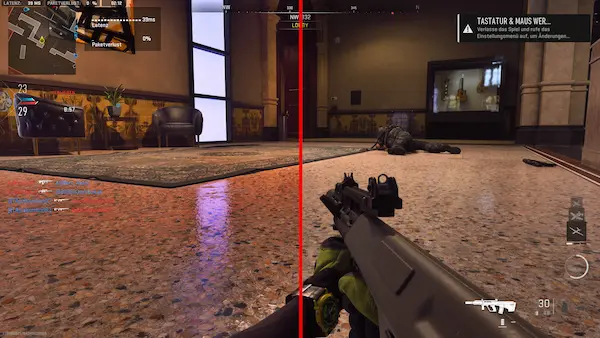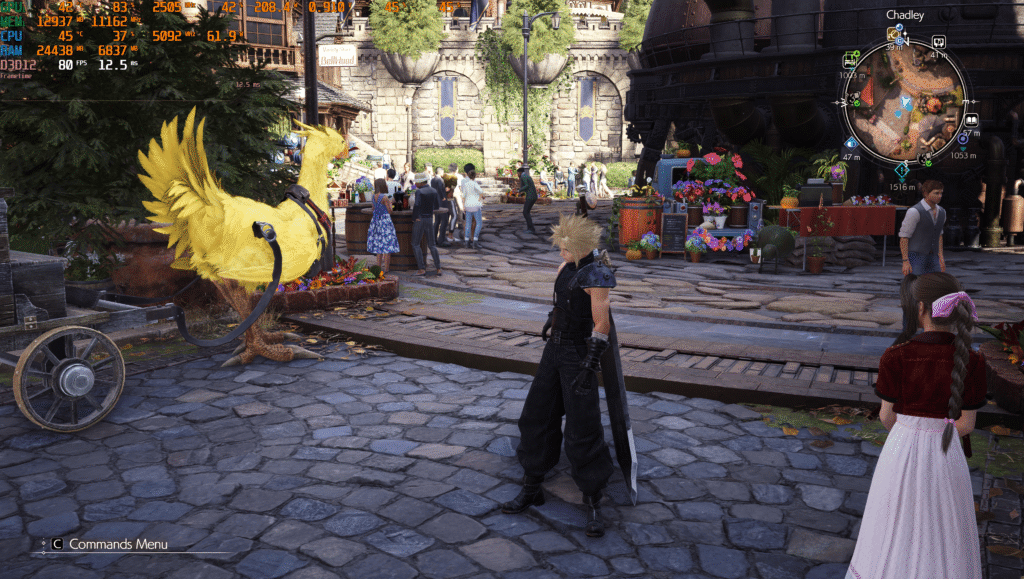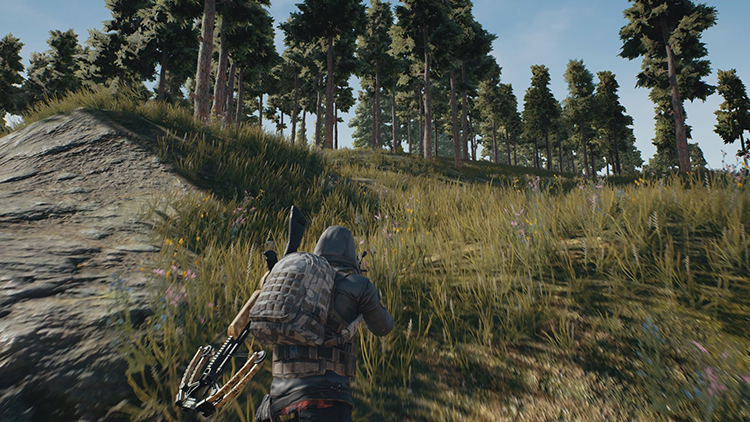In the ever-evolving world of gaming and digital graphics, visual fidelity has become one of the most important aspects of user experience. As technology pushes the boundaries of realism and immersion, tools that allow for visual enhancement have garnered immense popularity among gamers, content creators, and graphic designers. One such tool that has become a staple in the gaming community is ReShade. Whether you’re exploring sprawling open-world landscapes or navigating fast-paced multiplayer environments, ReShade has the power to transform how you see and experience digital worlds. But what exactly is ReShade, and what does it do?
Understanding ReShade: The Basics
ReShade is a post-processing injector developed primarily for video games and real-time applications. Created by Crosire, ReShade operates by injecting custom post-processing effects into a game’s graphics pipeline, enabling users to alter and enhance visual outputs beyond what is natively offered by the game or software. Essentially, it acts as a real-time shader tool that can introduce a variety of effects—ranging from subtle lighting improvements to dramatic color grading and cinematic visuals.
Unlike traditional in-game settings or official graphics enhancements offered by developers, ReShade provides a level of control and customization that is typically only achievable through extensive modding or professional-grade editing tools. This means users can create a personalized visual aesthetic tailored to their preferences, with minimal impact on the original game files.
How ReShade Works Behind the Scenes
To understand what ReShade does, it’s important to explore its underlying mechanism. ReShade functions as an injector for DirectX and OpenGL APIs. When a user installs ReShade, it hooks into the rendering pipeline of the game or application and modifies the way frames are presented on the screen. It does this by applying shaders—small programs that run on the GPU and process image data—to the final image output.
These shaders can manipulate a wide range of visual attributes including lighting, shadows, ambient occlusion, bloom, color balance, and much more. By acting as a layer between the game’s rendering system and the screen, ReShade effectively reinterprets how visuals are displayed without modifying any core gameplay mechanics or internal game code.
The injector is compatible with a vast number of games that use Direct3D 9, 10, 11, 12, and OpenGL, and recent updates have extended support to Vulkan-based games as well. This cross-compatibility allows ReShade to be used with hundreds of titles across multiple platforms, offering a nearly universal solution for post-processing customization.
The Range of Visual Enhancements Offered by ReShade
The true power of ReShade lies in its ability to apply a comprehensive suite of graphical effects that can fundamentally alter the look and feel of a game. Users have access to a rich repository of shaders, many of which are community-created and constantly updated to reflect advancements in visual technology.
ReShade allows for enhancements such as dynamic depth of field, chromatic aberration, film grain, color grading, lens flares, and global illumination simulation. These effects can lend a game a cinematic quality, making it resemble a movie scene rather than a traditional video game. For competitive gamers, performance-focused shaders such as clarity enhancement and contrast correction can improve visual clarity, helping players to better identify enemies and navigate complex environments.
Unlike traditional mods that require replacing texture files or altering game assets, ReShade applies its changes on the fly. This real-time flexibility ensures that users can experiment with different visual styles without risking game stability or violating game integrity.
Who Uses ReShade and Why?
ReShade’s appeal spans a broad range of users. Casual gamers use it to make their favorite games look more realistic or artistically distinctive. Competitive players may use it to sharpen visuals and reduce visual noise in fast-paced games. Meanwhile, content creators and streamers leverage ReShade to add a professional sheen to their gameplay footage, giving their content a polished and eye-catching look.
Additionally, ReShade has found a niche within the screenshot and digital photography communities. Enthusiasts known as “virtual photographers” use ReShade to capture in-game imagery that rivals real-world photography. With advanced shaders that simulate real-world camera effects such as bokeh and HDR toning, ReShade enables artists to create striking visuals within digital environments.
Even developers sometimes use ReShade during the prototyping or presentation phases of game development to quickly visualize different lighting conditions or to mock up stylistic effects without having to rewrite complex shader code within the game engine itself.
Installation and Setup Process
Installing ReShade is relatively straightforward, though it does require some technical knowledge, especially for those unfamiliar with graphics APIs. The installation involves downloading the ReShade installer, selecting the target game executable, and choosing the rendering API the game uses. Once this is done, users can select which shaders they want to install from a pre-existing library or import their own custom shader presets.
After launching the game, ReShade loads its user interface, allowing users to toggle shaders on and off, adjust effect parameters, and save presets. These presets can be shared with others, enabling a rich community of ReShade enthusiasts to collaborate and exchange visual styles. The UI is non-intrusive and customizable, allowing real-time changes without the need to exit the game.
While the tool is powerful, improper configuration can cause performance degradation, crashes, or incompatibility with anti-cheat systems. Therefore, it is important for users to follow best practices, such as backing up their files, using compatible shaders, and avoiding use in online competitive environments unless explicitly allowed.
Legal and Ethical Considerations
As ReShade modifies how games are rendered, questions often arise about its legality and compatibility with game policies. Technically, ReShade does not alter any game files, which makes it less risky from a modification standpoint. However, its usage in multiplayer or online games can be problematic due to potential conflicts with anti-cheat software.
Some developers and publishers explicitly prohibit or discourage the use of injectors like ReShade in online play, as they can be flagged as unauthorized modifications. In these cases, using ReShade can result in account bans or other penalties. To avoid such issues, it is recommended to use ReShade only in single-player or offline modes unless the game’s community or developers have endorsed its use.
In contrast, many single-player games and open-world titles encourage visual modding and artistic expression, making ReShade a welcome tool in those spaces. As with all mods and injectors, responsible usage and adherence to community guidelines are key to enjoying the benefits of ReShade without crossing any ethical or legal boundaries.
ReShade in Content Creation and Professional Media
Beyond gaming, ReShade has seen adoption in content creation and even professional media production. For YouTubers, streamers, and short film creators, the tool offers an accessible way to enhance footage captured in-engine without resorting to expensive software suites or time-consuming post-production work.
Some filmmakers and machinima creators use ReShade to give their scenes a distinct atmosphere or cinematic flair, using shaders to replicate real-world lens and film effects. This enables storytelling through digital avatars and environments with a visual quality that mirrors professionally produced content.
The influence of ReShade in these creative sectors reflects the growing convergence between gaming and traditional media. As game engines continue to evolve and blur the lines between interactive entertainment and cinematic production, tools like ReShade offer a bridge between these worlds, giving creators unprecedented control over digital storytelling.
Performance Considerations and Optimization
While ReShade offers powerful visual enhancements, it comes with performance trade-offs that must be managed carefully. Each enabled shader consumes GPU resources, and running too many effects simultaneously can lead to frame rate drops or input lag. The extent of this impact depends on the user’s hardware, the shaders being used, and the optimization level of the target game.
To mitigate performance issues, users can selectively enable only the most essential effects, fine-tune shader parameters, and use hardware monitoring tools to evaluate GPU load. Advanced users may also create different presets optimized for various scenarios—such as a high-quality preset for screenshots and a performance preset for real-time gameplay.
Additionally, many shaders are developed with performance in mind, offering low-cost alternatives to more GPU-intensive effects. The flexibility of ReShade’s interface allows users to strike a balance between aesthetics and performance that matches their specific needs.
Community Support and Ecosystem
One of ReShade’s greatest strengths is its active and passionate community. Thousands of users contribute to forums, Discord servers, and modding sites, sharing shader packs, presets, troubleshooting tips, and tutorials. This ecosystem ensures that new users have access to a wealth of knowledge and resources to help them get started and improve their skills.
The open-source nature of ReShade has led to the creation of custom forks and extensions, expanding the tool’s capabilities even further. Whether it’s developing new shader languages, integrating ReShade with other tools, or enhancing its UI, the community continues to drive innovation and push the tool in new directions.
This collaborative environment has also led to the creation of comprehensive documentation and guides, making ReShade more accessible to a wider audience than ever before. With strong developer involvement and enthusiastic community feedback, ReShade continues to evolve at a rapid pace.
The Future of ReShade and Real-Time Graphics
As the demand for visual fidelity grows and hardware becomes more powerful, real-time post-processing tools like ReShade are poised to become even more influential. With the rise of ray tracing, AI upscaling, and next-gen graphics engines, the boundaries of what can be achieved in real-time are expanding dramatically. ReShade’s adaptability makes it well-positioned to remain relevant in this rapidly changing landscape.
Future versions of ReShade may offer even tighter integration with emerging APIs, enhanced user interfaces, and support for machine-learning-driven shaders. These innovations could allow for more intelligent post-processing, adaptive effects, and even automatic optimization based on system specs or game genre.
Moreover, as VR and AR experiences gain mainstream traction, ReShade’s principles may extend into immersive environments, allowing users to customize how virtual and augmented worlds are perceived. The foundational technology behind ReShade holds significant potential beyond gaming, including architectural visualization, simulation training, and virtual production.
Conclusion
ReShade is more than just a tool for making games look prettier—it is a gateway to creative expression, visual storytelling, and technical mastery. By injecting real-time post-processing effects into games and applications, ReShade empowers users to transcend the visual limitations of their favorite titles and craft experiences that are both personal and artistically refined. Whether you are a gamer seeking visual realism, a content creator looking to elevate your work, or a developer prototyping a new look for your project, ReShade offers an invaluable set of capabilities.



